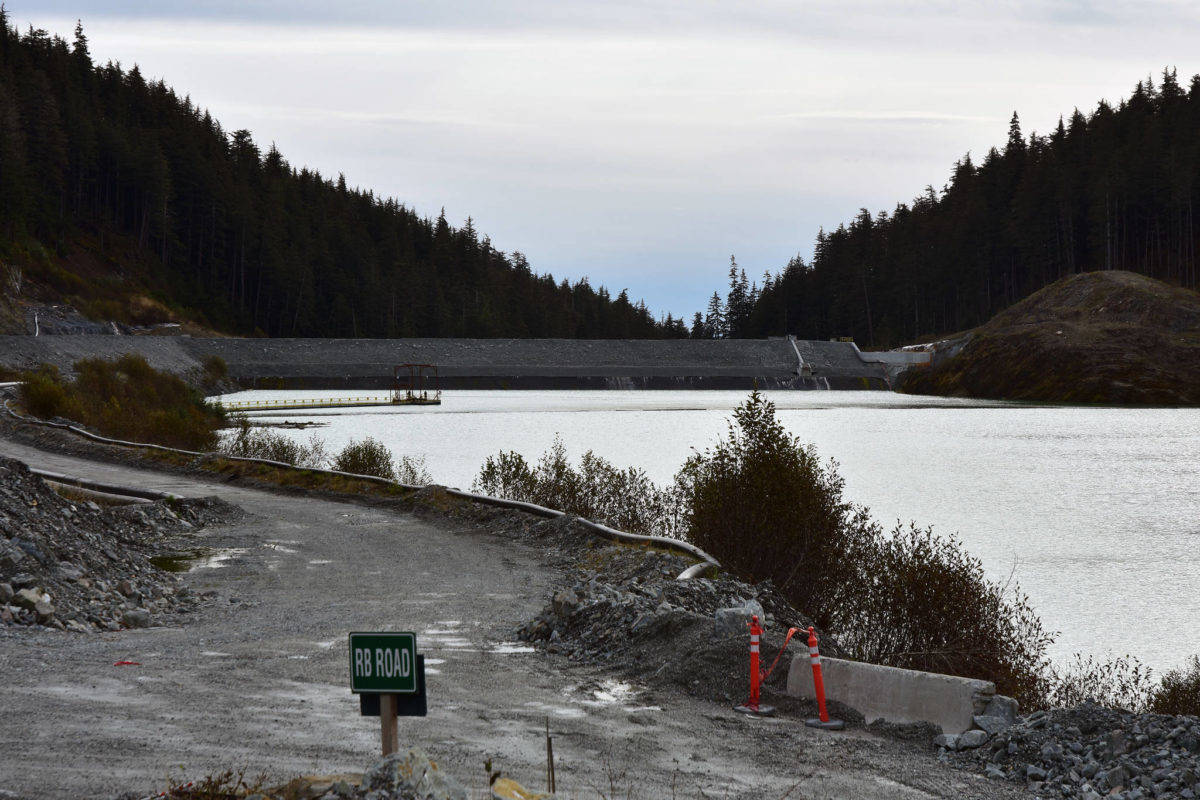This story has been updated to include response from Coeur Alaska.
The U.S. Forest Service is accepting public comment on a proposed expansion to the Kensington Gold Mine on the north side of Berners Bay until Jan. 4 and is asking the public to submit written comments to be incorporated into the final decision-making process.
At a virtual meeting Thursday evening, Forest Service representatives presented the proposal and a range of alternatives to the public and asked for public feedback, preferably in written form. Comments regarding concerns to proposed plans and any alternative ideas would be most helpful to staff, said Matthew Reece, minerals program manager with the Forest Service.
“There’s a long history of (the National Environmental Policy Act) on this project,” Reece said.
The original deadline for public comment was Dec. 14, Reece said, but has been extended to Jan. 4, in light of complications posed by the pandemic.
Coeur Alaska has been working on extending the life of the gold mine north of Juneau since 2018 when it first submitted plans to expand waste rock and water storage facilities in order to allow the mine to operate for another 10 years. Currently, the mine is permitted to operate until 2023 but the company would like to have the mine operate another 10 years if not more.
[Coeur is committed to environment in expansion, mine manager says]
In order to be permitted for another 10 years, Coeur will have to expand storage areas for excess material from the mine which includes hazardous wastewater. Excess water from the mine’s processing is passed through a treatment center before being deposited in a dammed lake known as a tailings treatment facility. The company will have to raise the level on the dam to allow for more tailing storage.
The tailings facility and wastewater are among some of the largest concerns from past public comment periods, Reece said. Environmentalists are concerned about pollutants leaking from the mine’s facilities and contaminating local fish spawning grounds. Several members of the Southeast Alaska Conservation Council asked questions at Thursday’s meeting concerning protections for nearby waters and long-term monitoring of the dam. SEACC filed a lawsuit against the mine in 2005 when Coeur obtained permits from the U.S. Army Corps of Engineers. That suit was settled at the U.S. Supreme Court in 2009 in Coeur’s favor and Kensington began operating in 2010.
Speaking to the Greater Juneau Chamber of Commerce last month Kensington’s General Manager Mark Kiessling said the company followed the strictest environmental standards and would ensure protections beyond the life of the mine. The mine has a water treatment facilities next to the tailings facility which Kiessling told the chamber would remain until the Forest Service and the Alaska Department of Environmental Conservation say it’s no longer necessary.
Waste minerals from the mine will eventually settle to the bottom of the tailings lake, and when the mine is closed the tailings lake will be connected with a smaller nearby lake to create one large water body, according to Couer’s plan of amendment. Kensington’s dam will remain in place in perpetuity, Reece said, but environmentalists raised concern about the long-term integrity of the dam.
“The major issues I see are that the Forest Service does not adequately consider the effect or risk of climate change on any of the alternatives including the risk of failure from a dam that has to last forever,” said Guy Archibald, SEACC staff scientist in an email. “There have been recent instances where the water level rose above the 100-year flood freeboard on the tailings dam because they could not treat and release water fast enough. The recent deluge of two weeks ago highlights this risk.”
[Digging into Kensington Gold Mine]
Jan Trigg, Coeur Alaksa spokesperson, said in an email the company is monitoring and mitigating for pollutants and financial assurance are in place through a reclamation trust.
“Financial assurance will remain in place until closure conditions are met,” Trigg said, referring to clearance that would be issued by both the Forest Service and Alaska Department of Environmental Conservation.
The Forest Service released its Draft Supplemental Environmental Statement for the plan of amendment and three alternatives including a no-action alternative in October. One attendee at Thursday’s meeting asked under what circumstances the no-action alternative would be chosen, Forest Service representatives said it was difficult to imagine a scenario.
The final decision could be a combination of the proposed alternatives, Reece said.
Approval of Coeur’s plan would mean Kensington can operate until 2033, beyond that company representatives declined to speculate.
“Past 2033, we’re going to take it the next 1o years and then we’ll consider it at that time,” said Kevin Eppers, environmental manager with Coeur.
President Donald Trump rolled back requirements under the NEPA process in July, but because the plan is an amendment to Coeur’s previously approved plan, the review process will be conducted using the older guidelines, Reece said.
The Forest Service has a project website with information and options for submitting public comment. Coeur Alaska has set up its own website, kensingtonseis.com, with additional project information and options for public comment.
How to comment: Information on the project, including the DSEIS and past documents on the project can be found at the Forest Service project website: fs.usda.gov/project/?project=55533. Public comments can also be submitted to the project website.
Email: sm.fs.kensington@usda.gov
Fax: 907-586-8808
Mail: 8510 Mendenhall Loop Rd, Juneau AK 99801; attention Kensington Mine Plan Amendment.

